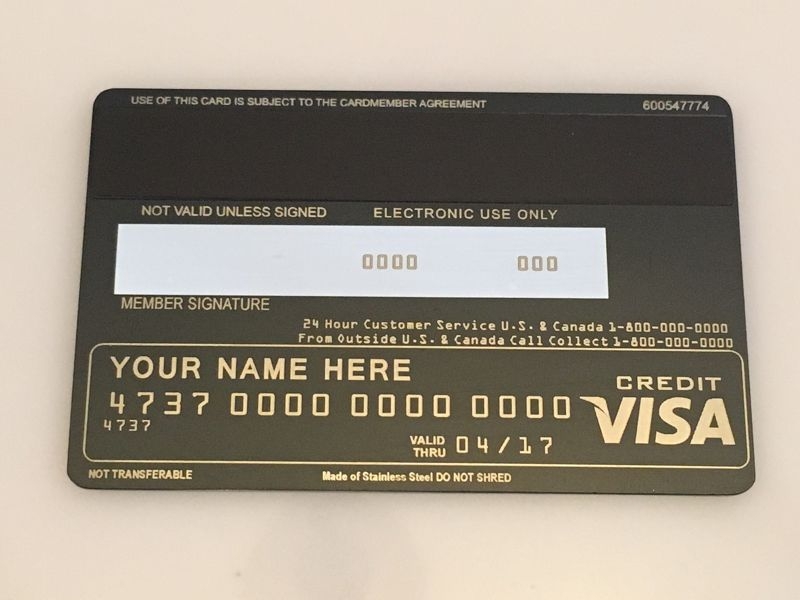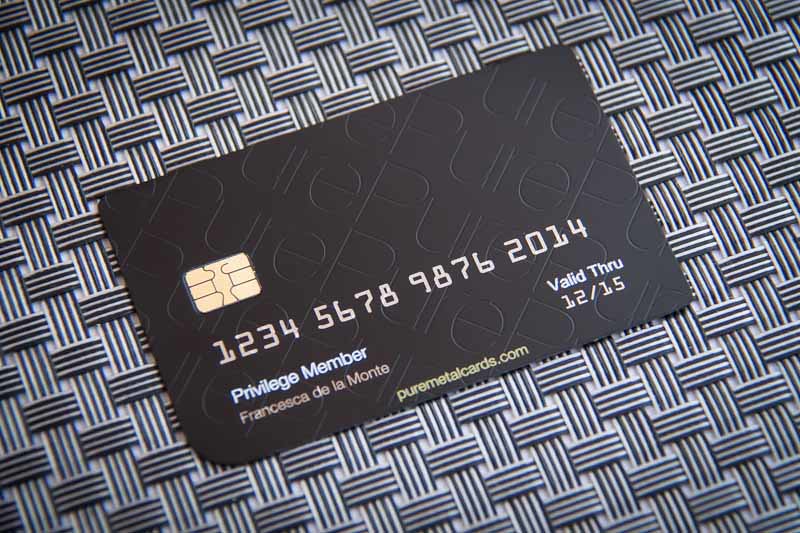
In addition, some cards are now vertical in design, rather than horizontal.

With the decline of paper slips, some credit cards are no longer embossed and in fact the card number is no longer in the front. Not all credit cards have the same sets of extra codes nor do they use the same number of digits.Ĭredit card numbers and cardholder names were originally embossed, to allow for easy transfer of such information to charge slips printed on carbon paper forms. Complex smart cards allow to have a variable security code, thus increasing security for online transactions. In addition to the main credit card number, credit cards also carry issue and expiration dates (given to the nearest month), as well as extra codes such as issue numbers and security codes. In addition, complex smart cards, including peripherals such as a keypad, a display or a fingerprint sensor are increasingly used for credit cards. Most modern credit cards use smart card technology: they have a computer chip embedded in them as a security feature. Credit cards have a magnetic stripe conforming to the ISO/IEC 7813. īoth of these standards are maintained and further developed by ISO/IEC JTC 1/SC 17/WG 1. The next nine digits are the individual account number, and the final digit is a validity check digit.

This is the first six digits for MasterCard and Visa cards. The card number's prefix, called the Bank Identification Number (known in the industry as a BIN ), is the sequence of digits at the beginning of the number that determine the bank to which a credit card number belongs. Ĭredit cards have a printed or embossed bank card number complying with the ISO/IEC 7812 numbering standard. The size of most credit cards is 85.60 by 53.98 millimetres ( 3 + 3⁄ 8 in × 2 + 1⁄ 8 in) and rounded corners with a radius of 2.88–3.48 millimetres ( 9⁄ 80– 11⁄ 80 in) conforming to the ISO/IEC 7810 ID-1 standard, the same size as ATM cards and other payment cards, such as debit cards.


2.3.3 Early general purpose charge cards: Diners Club, Carte Blanche, and American Express.In 2018, there were 1.12 billion credit cards in circulation in the U.S., and 72% of adults had at least one card. A credit card differs from a charge card also in that a credit card typically involves a third-party entity that pays the seller and is reimbursed by the buyer, whereas a charge card simply defers payment by the buyer until a later date.Ī credit card also differs from a debit card, which can be used like currency by the owner of the card. In contrast, credit cards allow the consumers to build a continuing balance of debt, subject to interest being charged.
Black steel credit card full#
Ī regular credit card is different from a charge card, which requires the balance to be repaid in full each month or at the end of each statement cycle. Most cards are plastic, but some are metal cards (stainless steel, gold, palladium, titanium), and a few gemstone-encrusted metal cards. There are two credit card groups: consumer credit cards and business credit cards. The card issuer (usually a bank or credit union) creates a revolving account and grants a line of credit to the cardholder, from which the cardholder can borrow money for payment to a merchant or as a cash advance.
Black steel credit card plus#
PO Box, APO/FPO, Alaska/Hawaii, Albania, Algeria, Andorra, Angola, Argentina, Armenia, Azerbaijan Republic, Bahrain, Barbados, Belize, Bolivia, Bosnia and Herzegovina, Botswana, British Virgin Islands, Brunei Darussalam, Cambodia, Cameroon, China, Colombia, Cook Islands, Costa Rica, Dominican Republic, Ecuador, Egypt, El Salvador, Fiji, France, French Guiana, French Polynesia, Georgia, Germany, Ghana, Gibraltar, Greenland, Guadeloupe, Guam, Guatemala, Guernsey, Honduras, Hong Kong, Iceland, India, Indonesia, Jamaica, Jersey, Jordan, Kazakhstan, Kenya, Kuwait, Lebanon, Macedonia, Malawi, Maldives, Martinique, Mauritius, Mayotte, Moldova, Morocco, Mozambique, Namibia, New Caledonia, Nicaragua, Nigeria, Oman, Palau, Panama, Papua New Guinea, Paraguay, Puerto Rico, Qatar, Reunion, Russian Federation, Rwanda, Saint Lucia, Saint Pierre and Miquelon, Saint Vincent and the Grenadines, Senegal, Serbia, Seychelles, Sri Lanka, Suriname, Taiwan, Tanzania, Trinidad and Tobago, Tunisia, Turkey, US Protectorates, Uganda, Ukraine, Uruguay, Vanuatu, Venezuela, Virgin Islands (U.S.A credit card is a payment card issued to users (cardholders) to enable the cardholder to pay a merchant for goods and services based on the cardholder's accrued debt (i.e., promise to the card issuer to pay them for the amounts plus the other agreed charges).


 0 kommentar(er)
0 kommentar(er)
